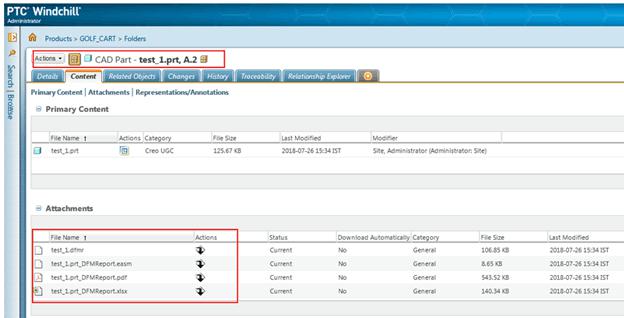PTC has announced track spotlight presentations for Agile Product Development, CAD, and the Digital Thread. This is great news indeed since these 3 topics are critical to an organization’s digital transformation journey and Liveworx 2023 is focused on digital transformation. One can almost certainly say that a manufacturing organization cannot succeed in its digital transformation initiative without adopting all 3 of these concepts.
CAD is surely a well-known topic to most readers of this article. For those uninitiated on the topics of Agile and Digital Thread, PTC has detailed write-ups explaining these concepts. Please refer to this page and this blog article to get acquainted with the digital thread concept. Agile Product Development is another concept that has gained attention now in the manufacturing world whereas it is common in software development. Recent blog articles from PTC like “What is Agile Product Development?”, “Why Manufacturers Should Care About Agile Product Development”, and Why Agile is the Next Big Thing in Product Development are excellent references for this topic.
The following lines from the first blog article in the above list are key to understanding the agile concept.
Organizations do not have to fully adopt Agile to see its benefits. Every company is different and Agile is designed to be flexible. As we alluded to earlier, the path to success often flows through adaption rather than adoption.
Even the implementation of Agile in an organization can be “agile” and iterative. An organization cannot operate in an agile manner unless its employees adopt the agile mindset. This means that even though Agile is flexible, it does need the organization to change, and change is hard. Change involves people, processes, and tools. Though agile stresses that individuals, teams, and collaboration are more important for project success compared to processes and tools, an organization must provide its people with the right tools to become agile and facilitate collaboration and also change processes where applicable to support Agile Product Development initiatives. It is not sufficient to say that one must become agile and continue to rely completely on paper-based methods or manual reviews where automation is possible and is likely to accelerate product development.
One of the key hurdles in improving agility in the product development process is long lead iterations. Issues related to manufacturing, assembly, quality, etc. detected late in the product development lifecycle lead to iterations and change orders which could have been avoided. Agile emphasizes that change is good, but iterations must be quick and as early as possible. Design iterations can be quick and early if design engineers have the tools to take the right decisions and initiate early collaborations with manufacturing, suppliers, and other downstream subject matter experts. Creo and Windchill have the frameworks in place to support this workflow. DFMPro for Creo Parametric leverages these frameworks to help provide the right information and best practices at the right time, that is, during design. DFMPro for Creo Parametric is integrated right within the design environment and provides design engineers assistance with recommendations to help ensure that the shipped designs adhere to the recommended best practices.

A design engineer can make design changes very early in the design phase where applicable. DFMPro results and reports (excel, pdf, eDrawings) can be stored in Windchill associated with the specific version of the component. These artifacts can then be reviewed at any point in time by reviewers, manufacturing engineers, quality engineers, etc. to verify any open issues. Design decisions include trade-offs and, in some cases, functional requirements may need some tweaks or adjustments in manufacturing or assembly which may go against the standard best practices. Design engineers have the flexibility to add their comments, and reasons for deviation, capture related images, and include them in the results and reports attached to the design revision in Windchill.

This improves the collaboration and review process by making it earlier and more proactive rather than late and reactive.
Recently, DFMPro has also introduced the ability to auto-analyze components post-check-ins using dedicated analysis servers leveraging a silent mode Creo deployment and execution at the customer site and Windchill triggers and notification capabilities. This serves as a potential gate for review phases and ensures that all targeted components are analyzed by the software and reports and results are available for quick reviews. This helps improve traceability and contributes to an organization’s digital thread initiative thus accelerating its digital transformation journey. To know more about DFMPro and how it can help your organization, visit the DFMPro website or write to dfmpro.marketing@hcl.com.






